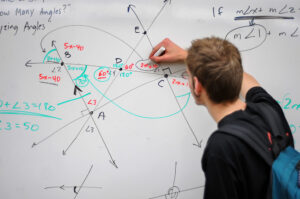The ACT is important to high school students in Missouri and across the U.S. for several reasons. It is an important factor considered in college admissions and the way scholarships are awarded. It can help students become eligible for the A+ Scholarship. While the level of importance can differ among students based on their plans, it is a tough challenge for everyone their first time. Students take timed tests in multiple subjects, answering questions that can confuse them or make them second guess themselves.
This is the final article of a four-part series on the ACT, describing each of the subject tests and how to prepare for them. We will finish with science.

The basics of the science test
Like the reading portion, the science portion of the test involves reading passages and answering questions about that information. The passages are from academic journals or reports and students will need to provide data from that information. Students have 35 minutes to answer 40 questions.
How do I prepare for the test?
 The ACT publishes a test breakdown which describes how much of the test is focused on one topic. In each topic, it is further broken down into certain areas of focus. For science, a majority of this test will focus on either data representation or research summaries. This means it will either ask you for a specific piece of data or to analyze what the passage focused on.
The ACT publishes a test breakdown which describes how much of the test is focused on one topic. In each topic, it is further broken down into certain areas of focus. For science, a majority of this test will focus on either data representation or research summaries. This means it will either ask you for a specific piece of data or to analyze what the passage focused on.
To help students prepare, the ACT also provides old versions of the test online and in print. Ask your counselor if they have copies of old booklets so you can take practice tests and time yourself.
How is the test graded?
The ACT has released its scoring rubric so you know ahead of time what to expect. This is very helpful for students who are aiming for a specific score.
What is your biggest tip for this test?
Study the small details. On graphs, look at the x and y axis and what they are measuring. For tables, look at what information is given and see if you can find a pattern. The test is used to determine if you can answer questions with the details you have been given, not what you already know.
Final thoughts
A common misconception about the science test is it is quizzing you on how much you know. While a general level of knowledge is needed, it is testing your ability to read and understand scientific information. Basically, what you are able to pick up from the information that is given to you in graph or text form. Remember, calculators are not allowed on this portion despite numerical data being involved. You should come to a conclusion, not a calculation. The quicker you can pick up patterns the better you will do.

 The ACT
The ACT 
 How do I prepare for the test?
How do I prepare for the test? The ACT has released its
The ACT has released its  How do I prepare for the test?
How do I prepare for the test? Final thoughts
Final thoughts